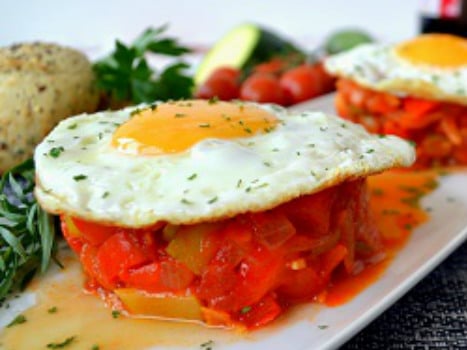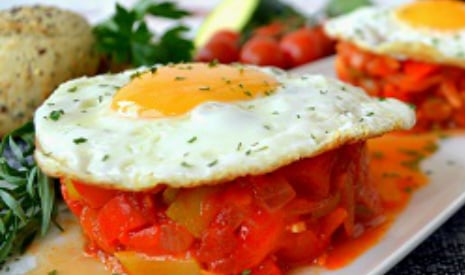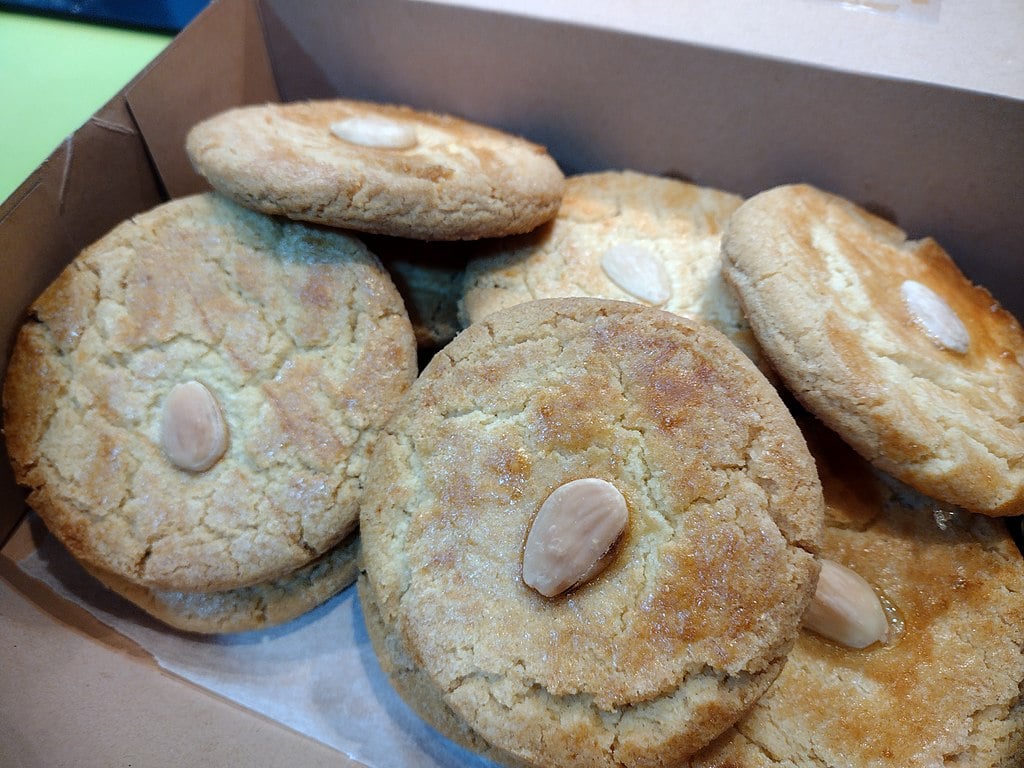Pisto is a Spanish vegetable dish from the regions of La Mancha and Murcia. It is often served with a fried egg balanced on top and with crusty bread, and is also often used as a filling for empanadas.
Luis Valerio from thespanishcuisine.com lets us in on his recipe for the Spanish classic.
Ingredients
Two cloves of garlic
One medium onion
One green bell pepper
One red bell pepper
Olive oil
Salt
One courgette
Three ripe tomatoes
One tablespoon of sugar
Four eggs

Pisto is traditionally served with an egg on top. Photo: thespanishcuisine.com
Instructions
Peel and chop garlic cloves.
Peel and chop onion.
Wash green and red peppers, take off stems and seeds and chop.
Place four tablespoons of olive oil in a large skillet and heat. When warm add onion, garlic and a pinch of salt and cook over low heat for four to five minutes.
Add the chopped peppers to the large skillet and stir-fry over medium heat for 10 -12 minutes.
Peel and chop the courgette.
Peel and grate tomatoes (a tip to peel off tomatoes easier is to immerse them in boiling water for 15 – 20 seconds).
Add courgette to the skillet and stir-fry over medium heat for two to three minutes more.
Add grated tomatoes, one teaspoon of salt and one tablespoon of sugar to cut the acidity. Cook over a medium heat for five to seven minutes.
FOR THE SPANISH STYLE FRIED EGGS
Place half a cup of olive oil in a non-stick frying pan.
Fry cracked eggs over a high heat with a pinch of salt. Do not overcook the yolk and try to get a delicate crunchy white.






 Please whitelist us to continue reading.
Please whitelist us to continue reading.
Member comments